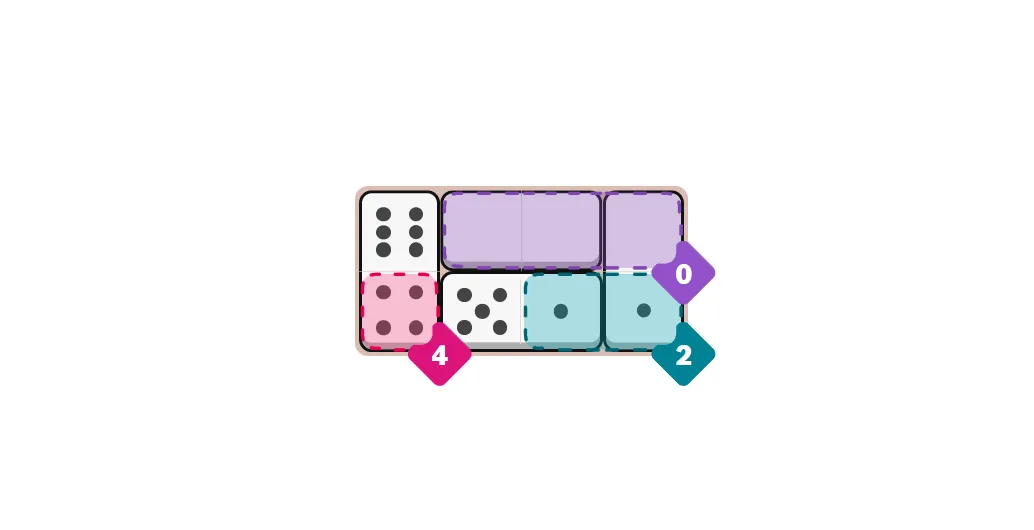Pips is a daily logic puzzle from The New York Times where you place dominoes to fill a board and satisfy the rule in each colored region. Unlike traditional dominoes, touching tiles don’t need to match—only the halves that land inside a region have to meet its rule.
Follow these clear steps to read the symbols, make smart placements, and finish puzzles on Easy, Medium, or Hard—at a relaxed pace or for a speedy “cookie” bonus.
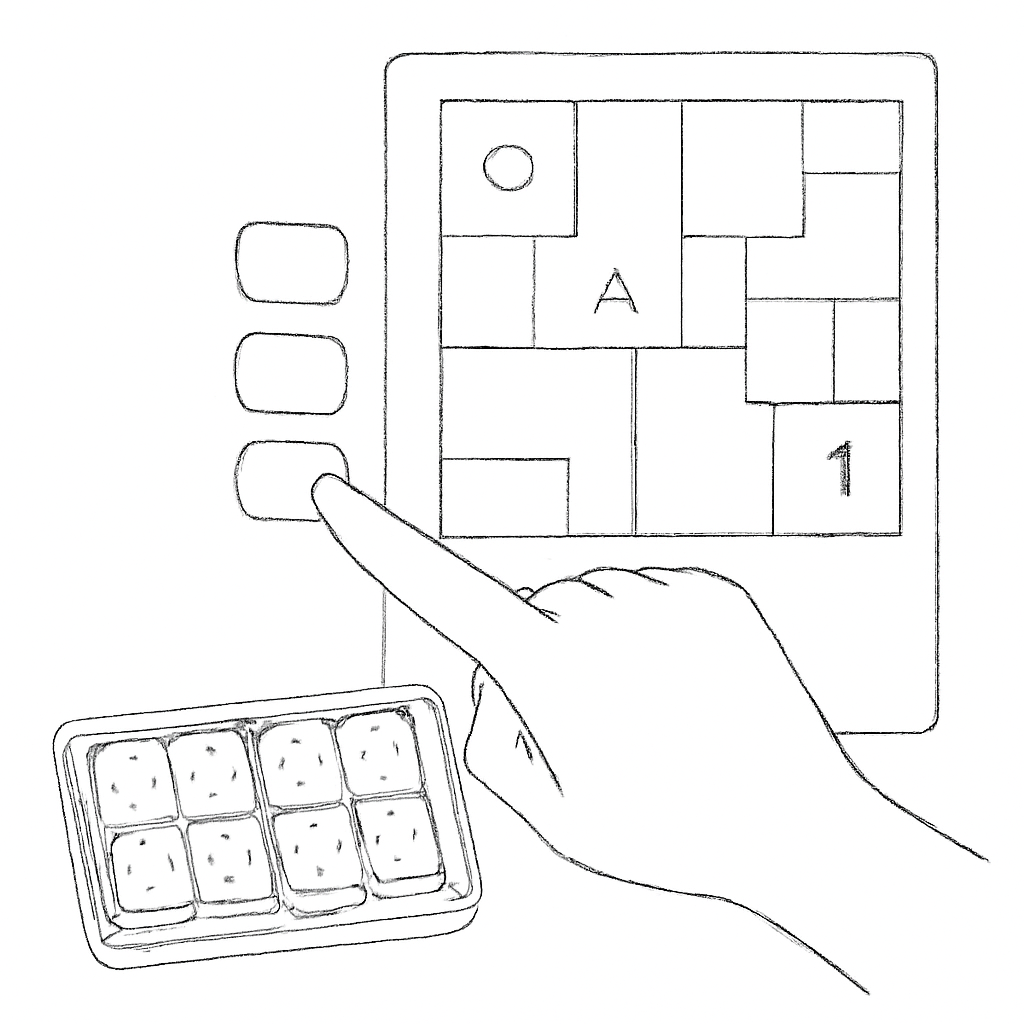
Step 1 — Open the game and pick a difficulty
Start on Easy to learn the flow, then move to Medium or Hard for bigger boards and more rules. You’ll see a tray of dominoes and a grid divided into colored regions; each region shows a symbol or number in its corner. You’re on track if you can identify where pieces could fit and notice that some regions are tighter or more open than others.
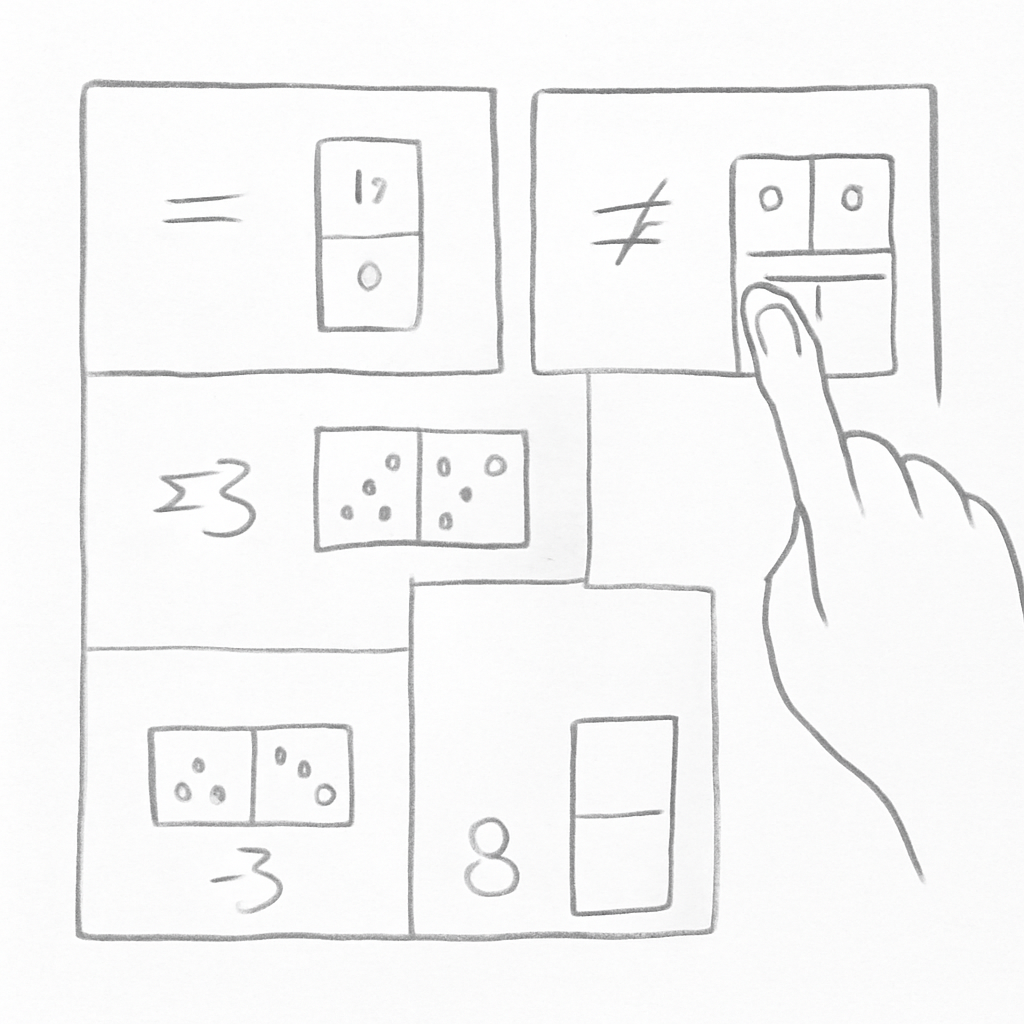
Step 2 — Learn the symbols and region rules
Match your placements to the symbol printed on each colored region. Only the half of a domino that lies inside a region counts toward that region’s rule; the other half can sit in a different region (or an empty one). Touching tiles do not need to match each other—ignore traditional domino matching.
- = (Equal): Every domino half inside the region shows the same number of pips.
- ≠ (Not Equal): Every half inside the region shows a different number of pips.
- > or < + number: Each half inside the region is greater than or less than the number.
- Number alone: The pips inside the region add up to that total.
- Blank corner: No rule here—place anything.
You’re on track if you can say out loud what each symbol demands and can tell which half of a domino is “responsible” for satisfying a rule.
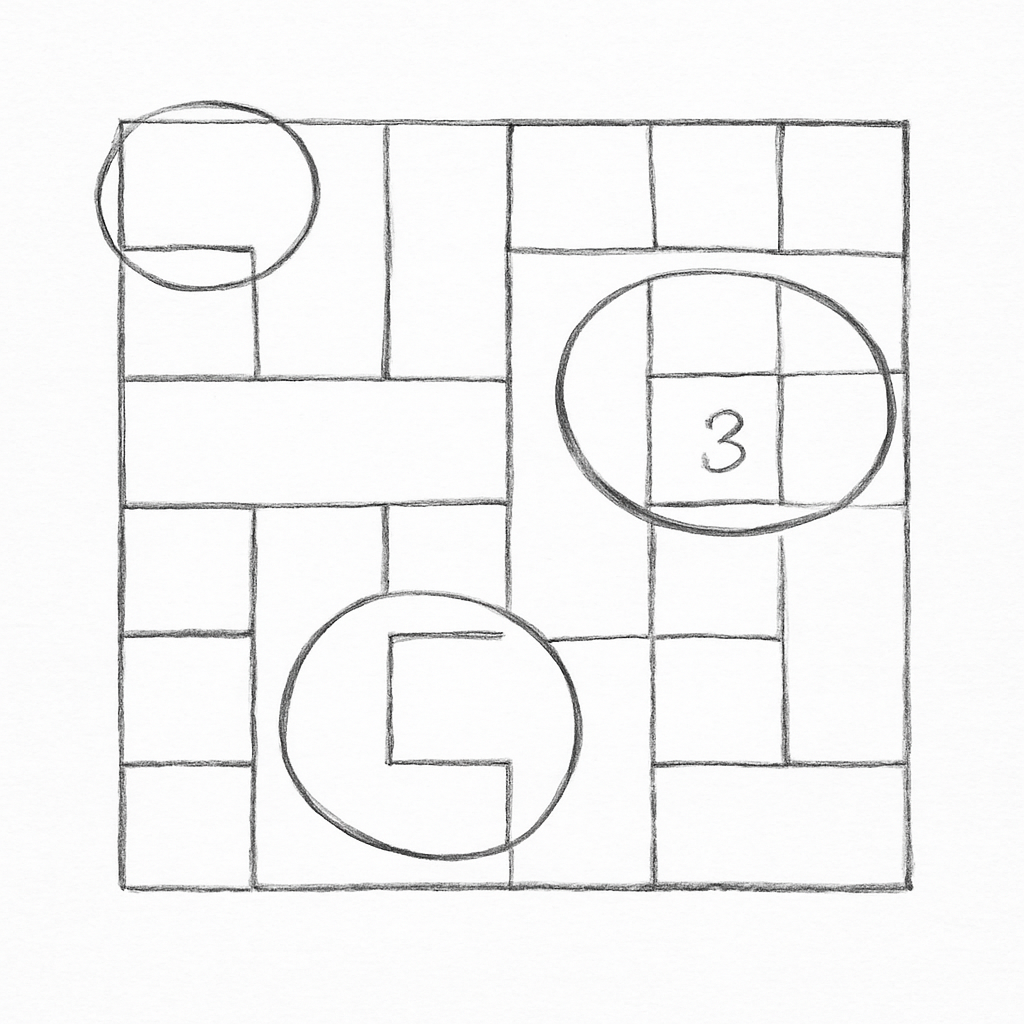
Step 3 — Scan for easy wins and forced fits
Look for regions or spaces that strongly limit your options before placing anything. Narrow corridors, single-squared “stubs,” and corners often force a piece orientation. Number regions with very small or very large totals, or “=” regions with several cells, also narrow choices quickly.
- Single-square gaps force one half of a domino to sit there.
- “= 3” across three cells means every half inside must be a 3.
- A tiny sum (like 0 or 1) demands low-value halves and often uses a 0.
- Long skinny aisles usually require dominoes placed in line with the aisle.
You’re on track if you can circle 1–3 spots that practically tell you what to place first.
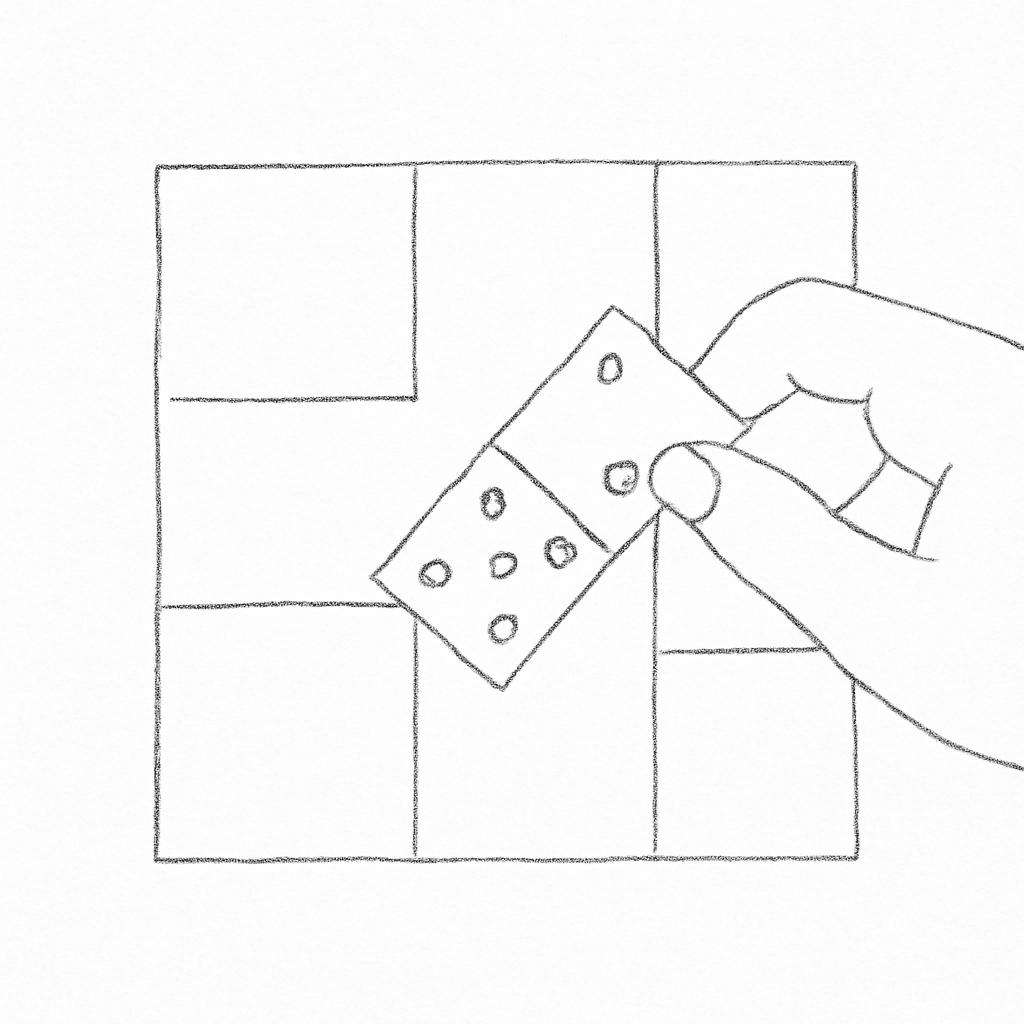
Step 4 — Place and rotate a domino to test a idea
Drag a domino into position and rotate it until one half sits where it helps most. Remember, only the half inside a region must follow that region’s rule; the other half can help satisfy a different rule or rest in a blank zone. Try a tentative placement, then glance at nearby regions to see if the move creates room or causes trouble.
You’re on track if your move makes at least one region easier to satisfy and doesn’t box you into impossible leftover spaces.
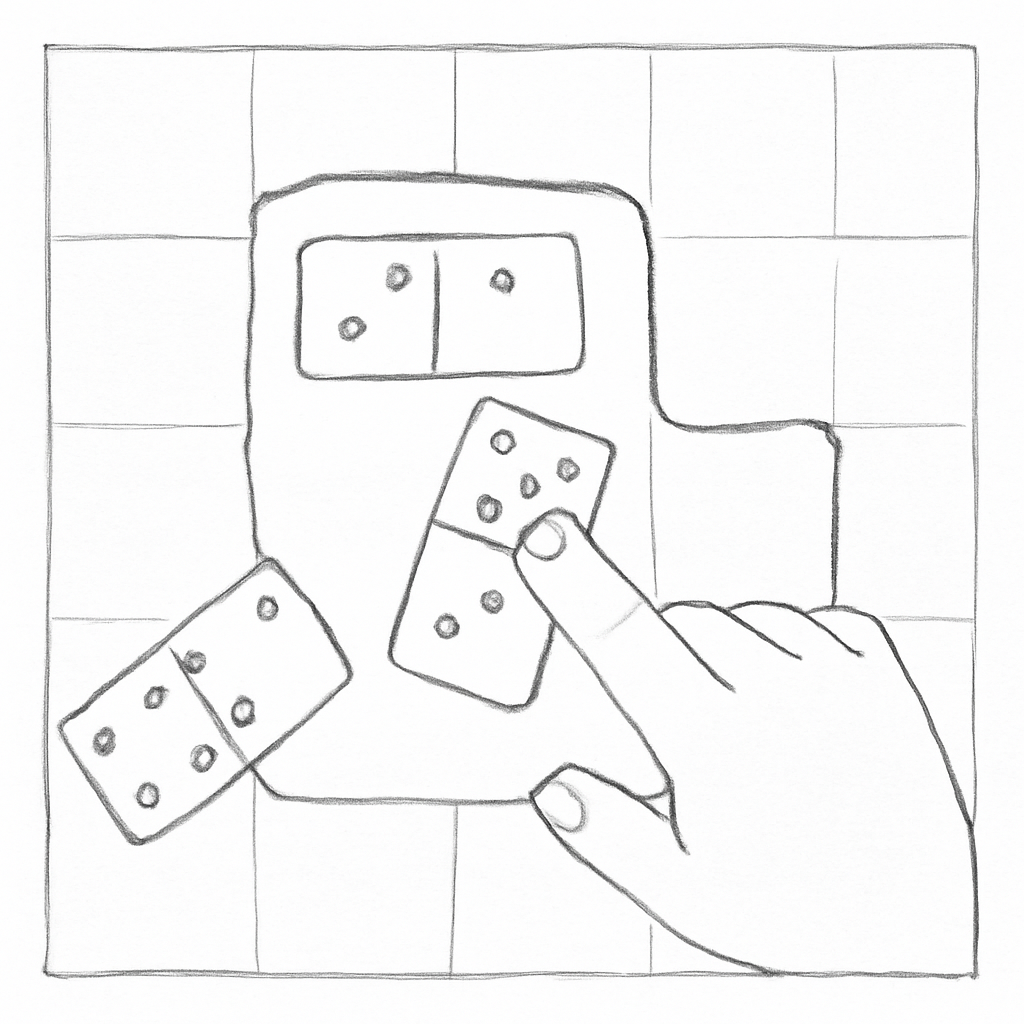
Step 5 — Count pips inside the region (and only those)
When a region shows a number, add only the pips on the halves that physically land inside that colored area. A single domino may straddle two regions—count each half where it sits. Build up to the target total gradually; if you overshoot, swap in a lower-value half or relocate a piece so a different half enters the region.
- You’re on track if your running total matches the target exactly with room for the remaining cells.
- If a last cell would force you over the total, undo the last increase and rethink.
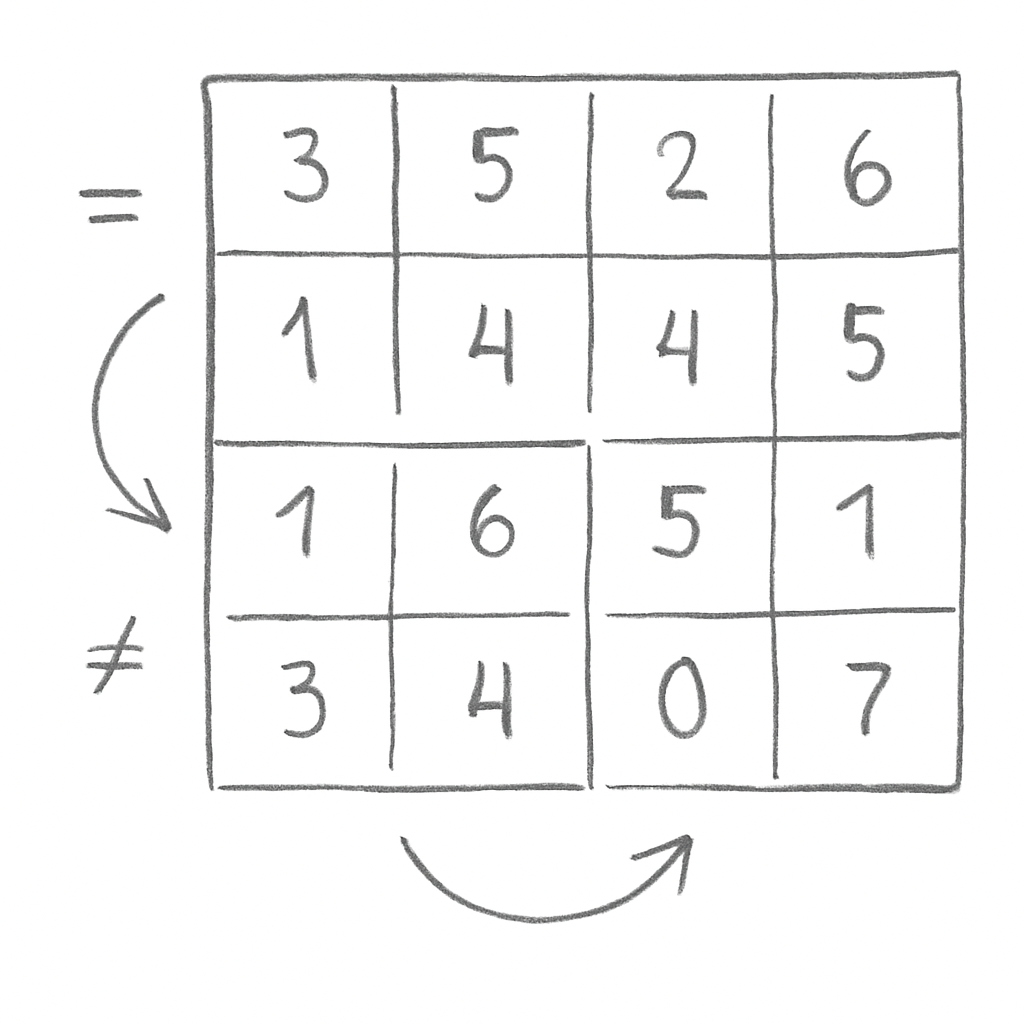
Step 6 — Use “=” and “≠” rules to prune options fast
Treat equality regions like magnets and inequality regions like color wheels. For “=”, fill the region with halves showing the same number; doubles (like a 3–3) are especially handy here. For “≠”, every half must be different—avoid repeating a number inside that region and spread unique values across its cells.
- “=” tip: When space is tight, pick a number that appears on several remaining domino halves.
- “≠” tip: If you’ve already used a number in that region, rotate or move a piece so a new number enters instead.
You’re on track if equality regions look uniform and inequality regions show a clean variety of numbers.
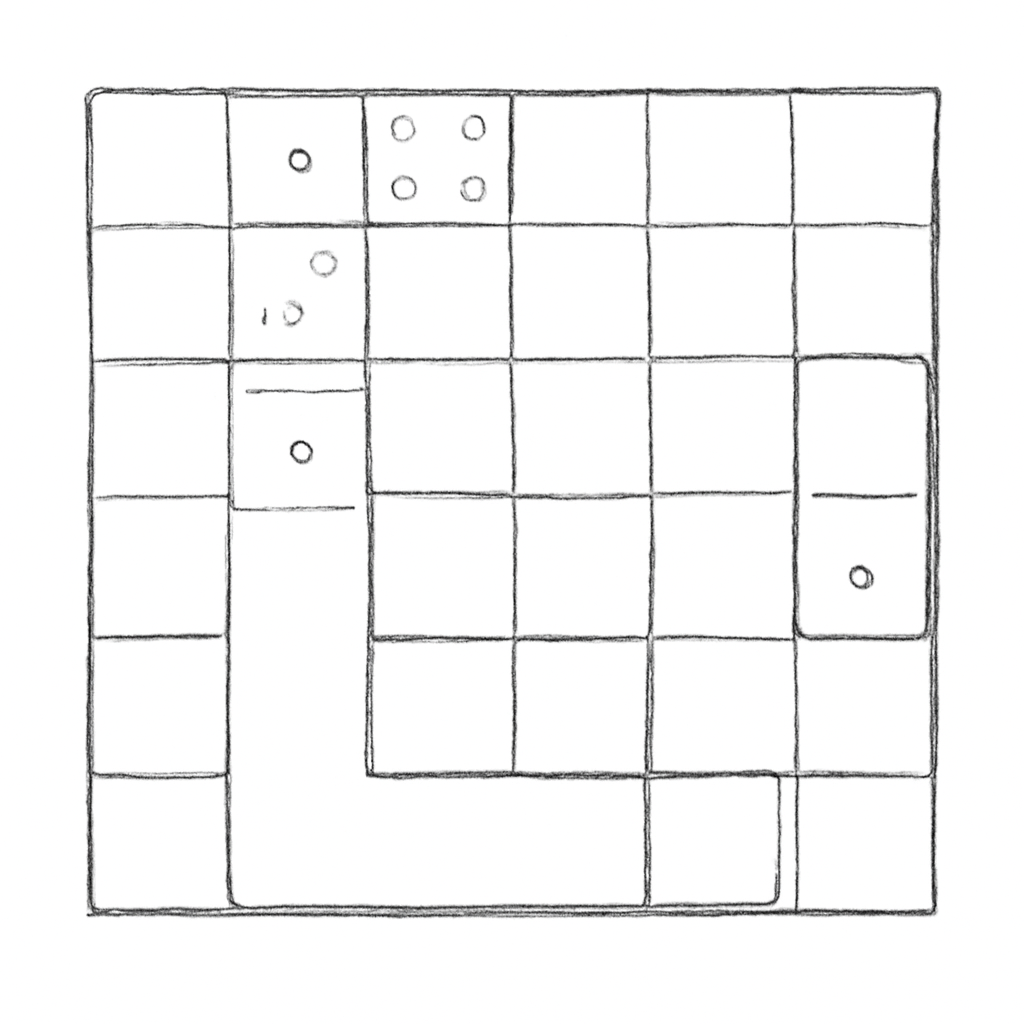
Step 7 — Work edges, corners, and corridors to guide orientation
Use the board’s geometry to reduce guesswork. Along edges, a domino can face only inward; in corners, its orientation is often forced. Fill long 1-cell-wide corridors in order so you don’t leave awkward gaps that no domino can cover later.
- Place from the tightest spaces outward to keep options open.
- If a piece creates a single isolated cell with no legal neighbor, undo and flip it.
You’re on track if every remaining gap can be covered by a 2-cell domino without overlap or spillover.
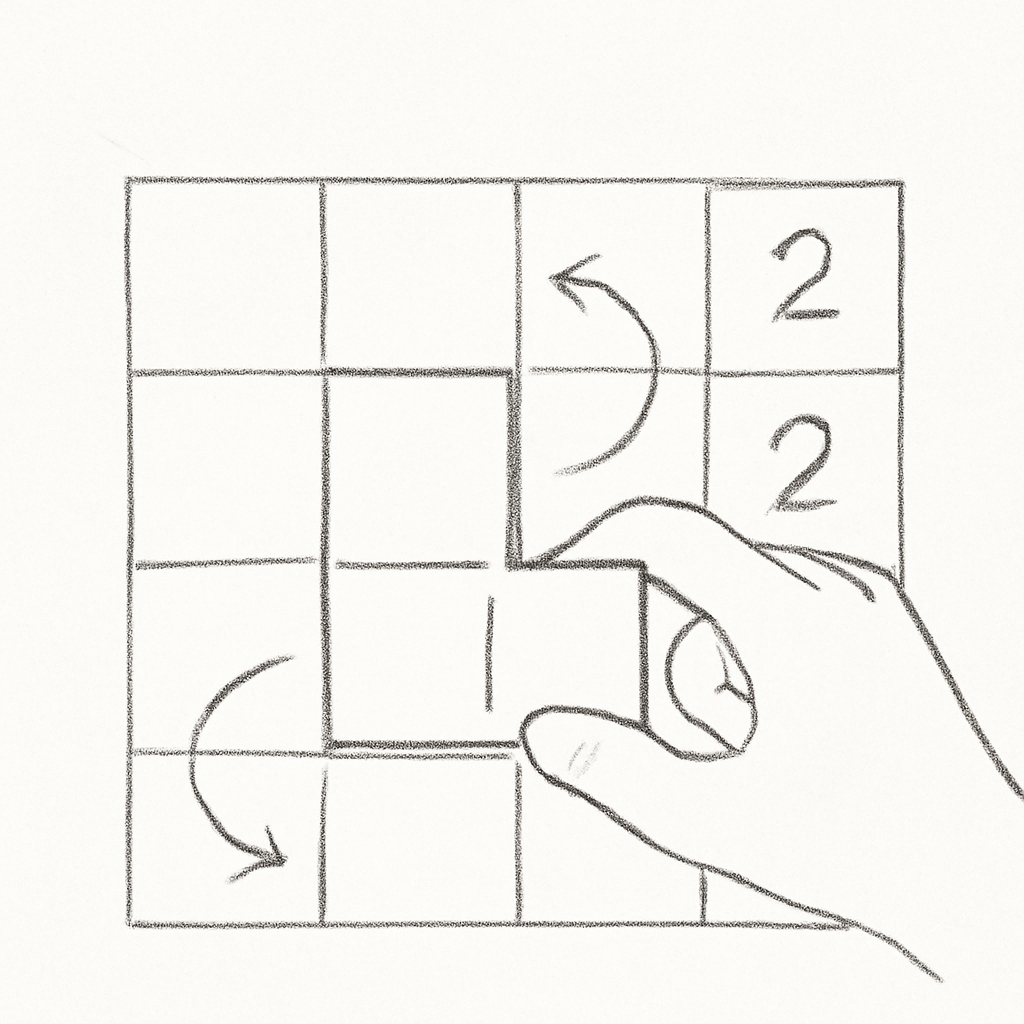
Step 8 — Alternate regions and backtrack cleanly
Place a piece, then immediately check the neighboring regions you just affected. If a move breaks a rule or makes the math impossible, undo it right away and try the next best option. Change one thing at a time so you can see exactly what helped or hurt.
- If two regions compete for the same useful half, finish the tighter region first.
- When truly stuck, clear one region and rebuild it from the simplest constraint.
You’re on track if each tweak either fixes a conflict or clearly teaches you where that domino belongs.
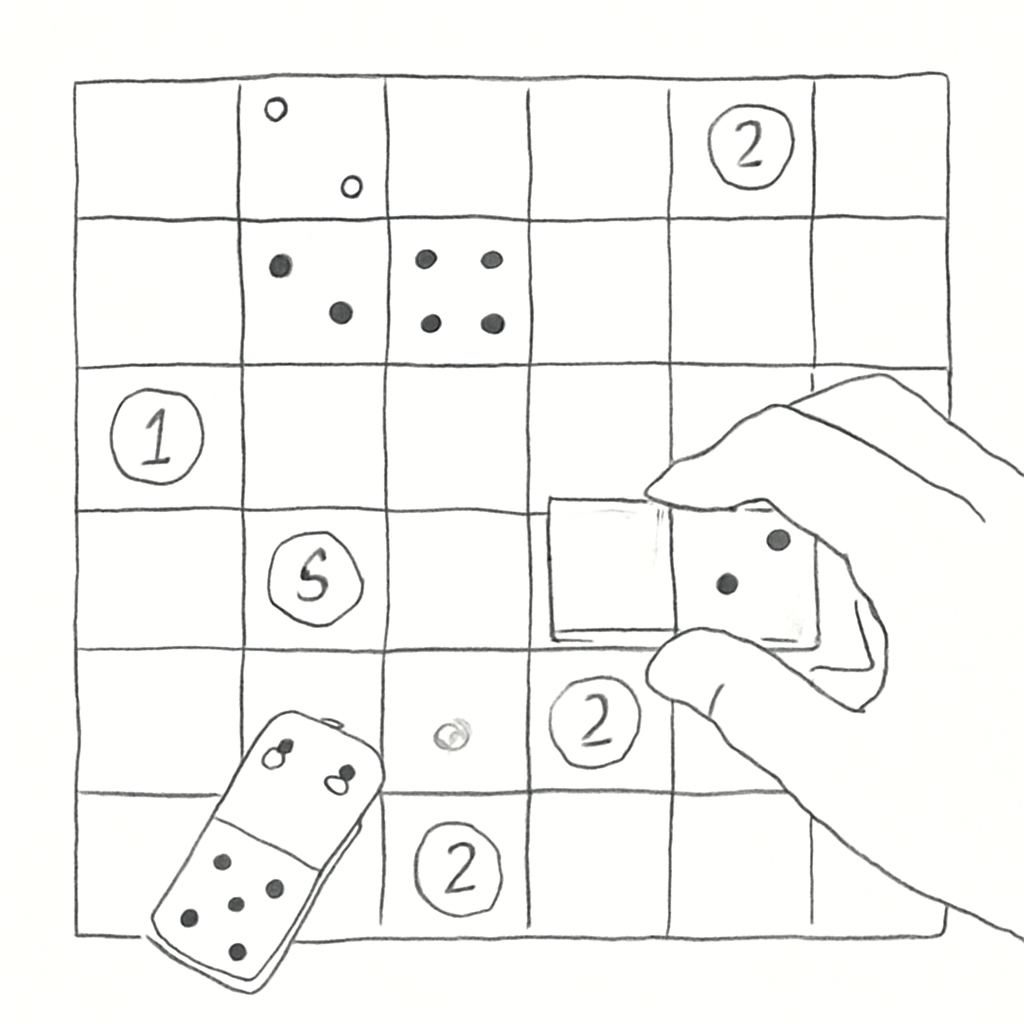
Step 9 — Use blank regions as flexible parking
Leverage regions with no rule to park tricky halves while you satisfy stricter areas. Treat blanks as buffers: let the “unhelpful” end of a domino rest there so the “helpful” end can meet a rule next door. Fill blanks later once the constrained regions are settled.
You’re on track if rule-heavy regions are solved first and blank zones get wrapped up near the end without surprises.
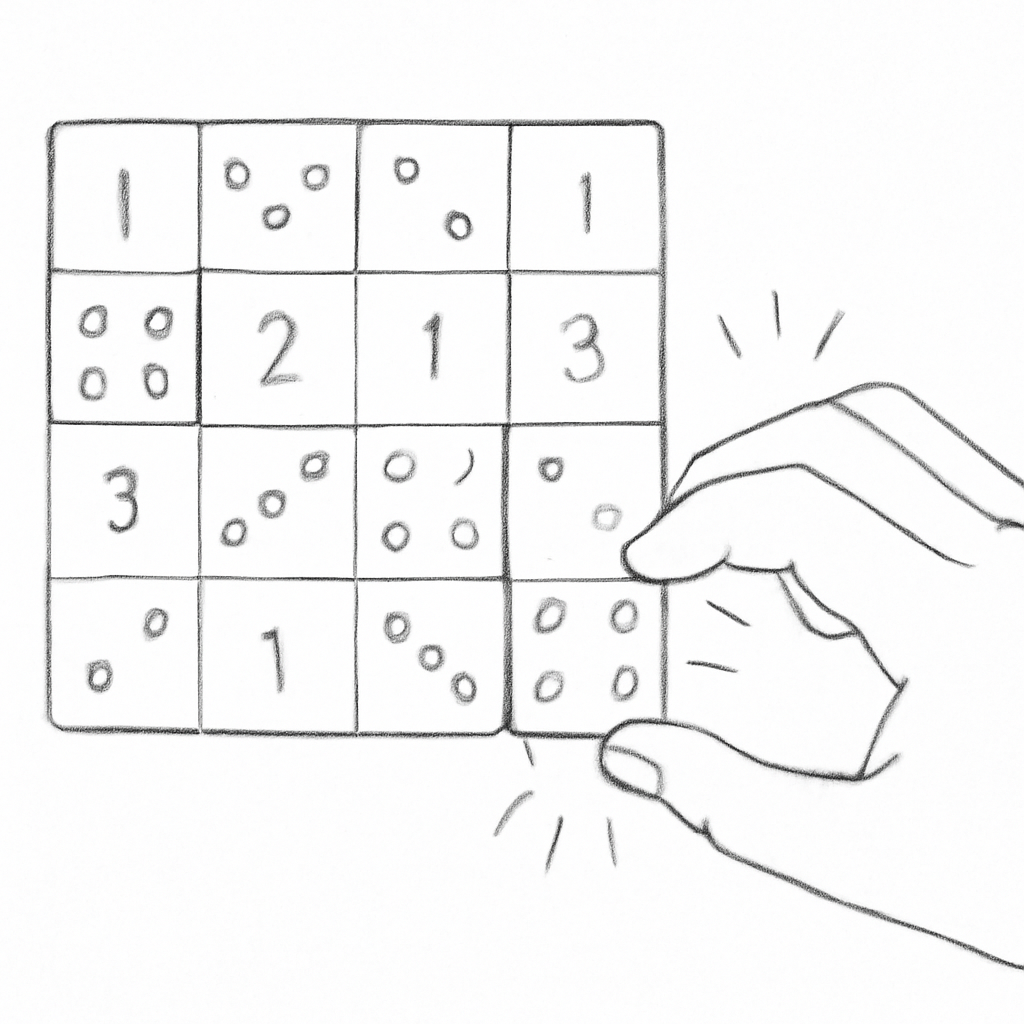
Step 10 — Do a final sweep and celebrate the click
Before placing your last domino, scan each colored region. Confirm totals match exactly, “=” regions all show the same number, “≠” regions show all different numbers, and any >/< rules are obeyed by every half inside. There’s no penalty for adjusting—tinker until everything fits, then enjoy the satisfying finish.
- You’re on track if no gaps remain, every region passes its rule, and no move feels forced.
- Optional: Turn on the timer and aim for a faster solve to earn bonus “cookies.”
Tips
- Start where the board is bossy: tiny regions, tight corners, or extreme totals.
- Save high-value doubles for “=” regions or big-number totals; save zeros for tiny sums or “<” rules.
- If a sum is nearly complete, count backward: decide what the last half must be, then place a domino that provides it.
- Keep blank regions open as pressure valves until late in the solve.
- Take a short break if you stall—fresh eyes often spot the forced move right away.
Warnings
- Don’t try to match touching domino numbers—the game doesn’t require it and you’ll limit yourself.
- A domino half only satisfies the rule of the region it’s in; don’t count pips that sit outside the boundary.
- If revealing the whole solution is tempting, try undoing the last few moves first—you’ll learn faster and enjoy the “aha!” moment more.
With the symbols in mind and a habit of checking regions as you go, Pips feels intuitive fast. Place with purpose, use blanks as buffers, and enjoy each clean click to the finish.

